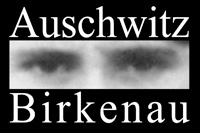




Sterilization experiments
Dr Carl Clauberg
Non-surgical mass sterilization method developed by him in the German Auschwitz concentration camp consisted of introducing into female reproductive organs a specially prepared chemical irritant that produced severe inflammation. Within several weeks, the fallopian tubes grew shut and were blocked.
Heinrich Himmler remained updated on the progress and outcomes of Clauberg's experiments. In June 1943, Clauberg wrote:
“The non-surgical method of sterilizing women that I have invented is now almost perfected… As for the questions that you have directed to me, sir Reichsführer, on the time necessary to sterilize a thousand women in this way, I can today answer them in the way that I had anticipated: if the research that I am carrying out continues to yield the sort of results that it has produced so far (and there is no reason to suppose that this shall not be the case), then I shall be able to report in the foreseeable future that one experienced physician, with an appropriately equipped office and the aid of ten auxiliary personnel, will be able to carry out in the course of a single day the sterilization of hundreds, or even 1,000 women.”Dr Horst Schumann
Also in 1942, Dr Horst Schumann, former head of the euthanasia institutes in Grafeneck and Sonnenstein, began sterilization experiments. Similarly to Clauberg, he searched for the most convenient way of mass sterilization based on the “scientific method”.
Groups composed of several dozen Jewish men and women prisoners were subject to sterilization experiments consisting of exposing the women's ovaries and the men's testes to X-rays. The exposure to radiation produced severe burns on the abdomen together with radiation inflammations and festering sores that were resistant to healing.
The results of the X-ray sterilization experiments were unsatisfactory. In the work that he sent to Himmler in April 1944, entitled The Effect of X-Ray Radiation on the human Reproductive Glands and based on the experiments conducted in Auschwitz, Schumann expressed a preference for surgical castration, as being quicker and more certain.
See also: Medical experiments
